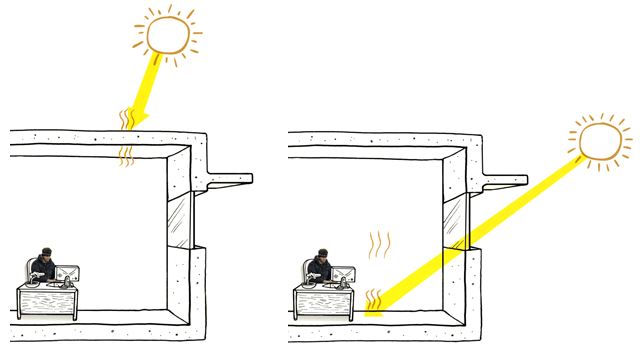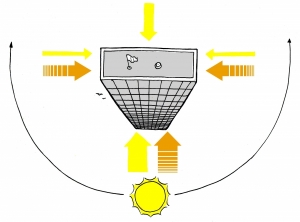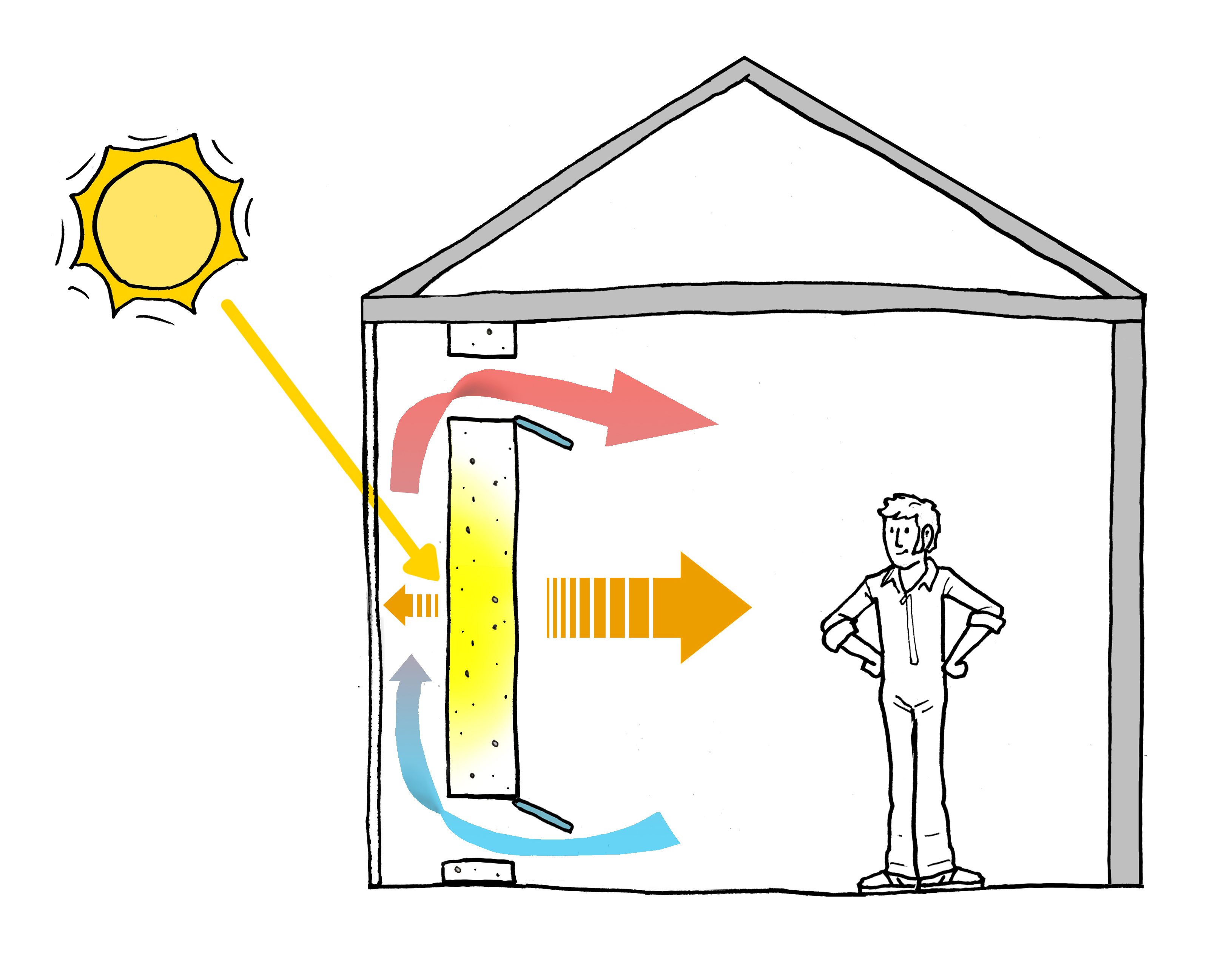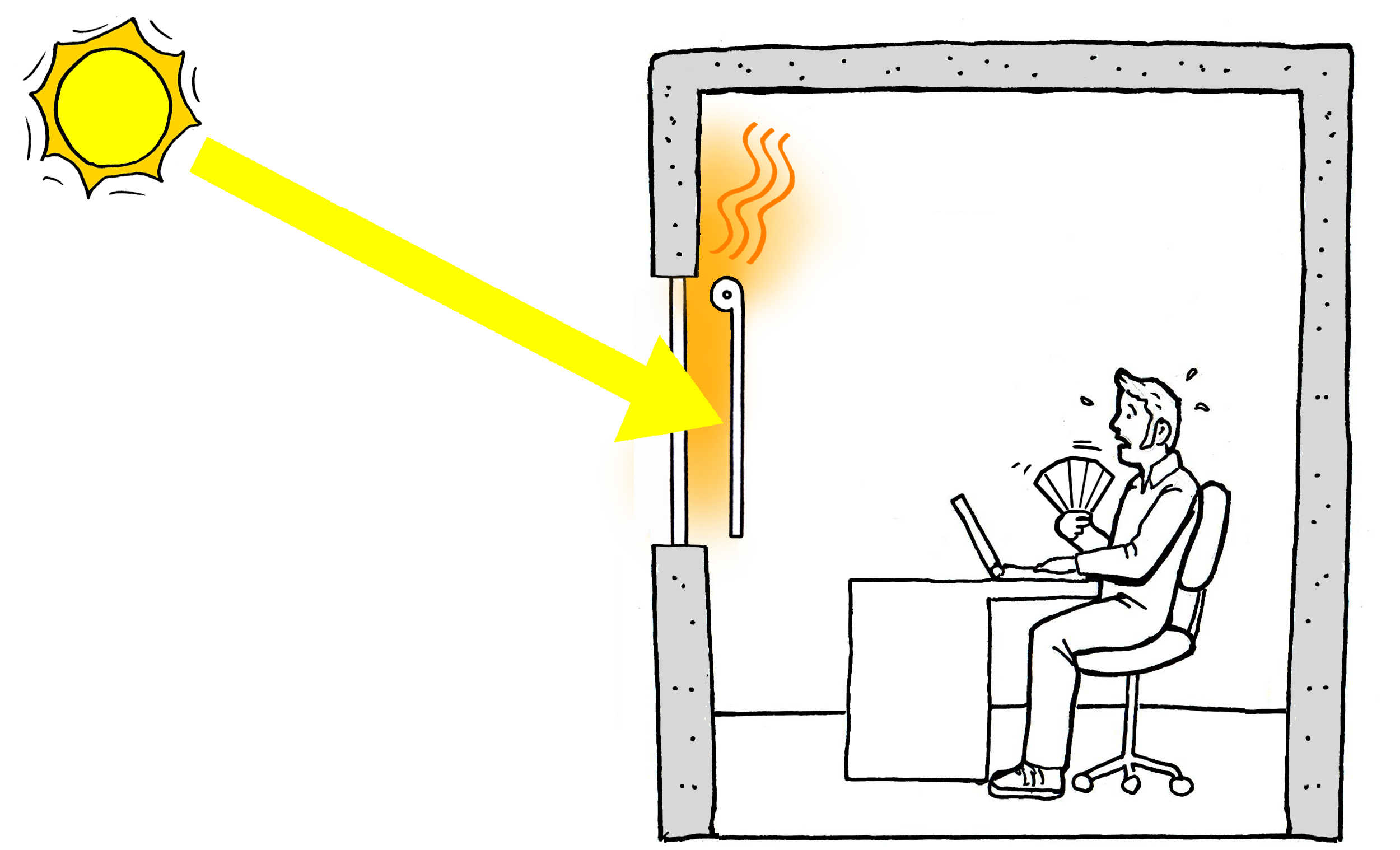You are here
Passive Heating
Passive heating uses the energy of the sun to keep occupants comfortable without the use of mechanical systems. These concepts will help you design for passive heating.
Dive Deeper
Direct Solar Gain
Direct gain is the heat from the sun being collected and contained in an occupied space. Direct solar gain is important for any site that needs heating, because it is the simplest and least costly way of passively heating a building with the sun. Avoiding direct solar gain is also important in hot sunny climates.Massing & Orientation for Heating
Massing and orientation are important design factors to consider for passive heating. Consider these factors early in the design so that the surface areas exposed to sun at different times of day, building dimensions, and building orientation can all be optimized for passive comfort.Thermal Mass
Thermal mass is a material's resistance to change in temperature. Objects with high thermal mass absorb and retain heat. Thermal mass is crucial to good passive solar heating design, especially in locations that have large swings of temperature from day to night.Trombe Wall and Attached Sunspace
A Trombe wall is a system for indirect solar heat gain that is a good example of thermal mass, solar gain, and glazing properties used together to achieve human comfort goals passively. It consists of a dark colored wall of high thermal mass facing the sun, with glazing spaced in front to leave a small air space.Apertures for Heating
Windows and other apertures bring in heat from sunshine, but can also lose heat by radiant cooling and by conducting heat better than most wall or roof constructions. Apertures and shading must be intelligently placed to take advantage of the sun's heat in cold locations and seasons, while not overheating in hot seasons.Shading for Solar Heat Gain
Shades can keep the heat and glare of direct sun from coming through windows. They can also keep direct sunlight off of walls or roofs, to reduce cooling loads.Comments




